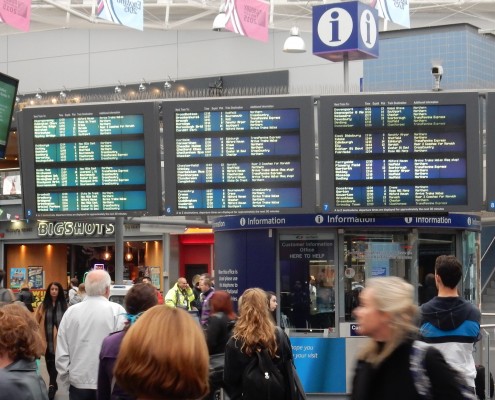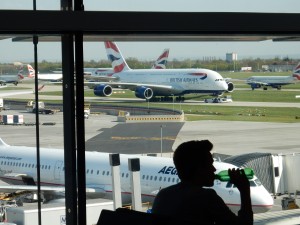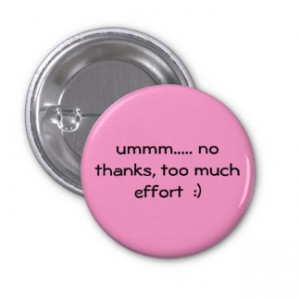Does the PRM acronym need an upgrade to ensure any disabled passenger has an empathetic experience?

(This post first appeared as a guest blog for International Airport Review in March 2017).
What’s in a name? A lot, it turns out.
There is, for example, no shortage of airports who create a brand based on the city they want to be associated with rather than where they are.
But stretching the thinking in the same way, this may be exactly what airport operators need to do when helping PRMs – passengers with reduced mobility.
Big improvements have already been made but as welcome as that is, it’s only addressing a small part of the wider issue. It risks ignoring those who need special assistance just as much and sometimes more; those who have issues that are less about the pure mechanics of getting from A to B and more about their understanding of the world with which they interact.
In business cultures that focus more on processing efficiencies than people, having PRM rules imposed means activity is often restricted to a tick-box exercise once the ramps are in place and more wheelchairs are available.
Yet the World Health Organisation says one in four people have difficulty in mentally processing information. 70 million people have autism. And, according to Disability Sport (UK), while around 11 million people in the UK have a disability, less than 8% of them require the use of a wheelchair.
To overcome the challenges faced, people with an intellectual or learning disability will usually travel with someone else; a family member or carer. Consequently, they are perceived to be relatively mobile and because their real disability is often invisible that sharp PRM focus on ‘mobility’ lands elsewhere.
People with an intellectual or learning disability will usually travel with someone else; a family member or carer…
Operators seeking to find more revenue from airlines and passengers know the importance of creating experiences that keep people coming back and telling others to do the same.
Upgrade the acronym
If an airport is serious about having better passenger experiences, then upgrading the acronym from PRM to PDN (People with Different Needs) or PID (People who Interact Differently) might just be the nudge that is needed.
During internal meetings, the strategy writers, operations coordinators and project managers will be in a better position to take a wider view of who their customers are. It will help them acknowledge that while this segment is given a three-letter acronym, that only describes their limitations in an airport; they remain a whole person with a real life.
Let’s be clear, there’s been some great work done to help PRMs. For people who find it difficult to navigate an airport’s infrastructure there is no doubt things are getting easier.
Collaborations between airlines and airports have reduced stress and anxiety. For those who need them, to see calming dogs, dementia friends and special-assistance wristbands is a huge help. To be on the receiving end of genuine staff empathy and patience when one of the family’s party is having an ‘episode’ or has no sense of how queues work is incredibly comforting.
We need to go further
Last August the CAA published a study on the progress that UK airports are making. It reported good levels of passenger satisfaction among those with a disability or reduced mobility. While some airports were applauded, the CAA pointed out there is still more to be done.
Too frequently we hear still about the poor treatment of passengers. Sometimes it’s unintentional. Often it’s because ‘that’s what the rules say’. Always though, there will be a personal impact for the traveller and therefore, ultimately, a commercial impact for the airport.
Only the airport themselves will know why it happens. Possibly, because PRM is treated as one of a raft of projects, rather than it be part of the culture. Employees are told how to make it happen rather than let it come from within and those signing off the business case are obsessing about the metrics, not the experience.
There are two issues at stake here
One is that making life easier for passengers, especially those with any kind of disability, is simply the right thing to do. And it’s consistent with many airport’s brand promises – genuine or not – to ‘put passengers at the heart of what they do’.
The second is a commercial issue. Whether they have a physical challenge or a learning disability, these passengers have wallets and their numbers are increasing.
Airports are under immense pressure to perform and today there are few stories written or marketing brochures printed that don’t refer in some way to the impact on passenger experience. We also know that as in most markets, our expectations as consumers are outpacing the rate at which better experiences are delivered. They have a voice and a choice and are not afraid to exercise either.
In Forrester’s survey of the S&P 500 with Watermark Consulting, they found that the stock market value of companies who had a customer experience culture grew during the 8 years between 2007 and 2014 by 107%. In contrast, those who didn’t grew by just 28% in that same time.
Meanwhile, AeroMexico calculated that a one-point change up or down in their Net Promoter Score had a $6m impact on the bottom line.
For airlines and airports better experiences mean more PRMs are feeling confident to fly. In the UK alone, the purple pound – the spending power of people with a disability – is estimated to be worth £212bn. The Papworth Trust carried out its own research that found two-thirds of disabled passengers would travel more often if it was easier to do so.
So, what does ‘easier’ mean?
I recently carried out a study of passengers’ unstructured feedback where they share their thoughts on social media and review sites about what it’s like going through an airport. At the top of the list of things that made them rate an airport highly was the environment; they want it to be quick, easy, friendly, clean and calm.
The absence of the same attributes was among the biggest reasons why they would advise others to use a different airport.
Those characteristics are the same for everyone; a family going on holiday, someone on business or a carer with a passenger who has a learning difficulty. So, if we extend the thinking to understand people with a disability, we’ll not only provide better experiences for them but everyone else too.
Autism spectrum disorders alone affect about 70 million people worldwide. Their symptoms include feeling bewildered at any social interaction, difficulties in communicating how they are feeling or why, and non-typical behaviours. To put them through a standardised process simply makes life harder.
Many of those with, or who care someone who has, a disability will be running on empty emotionally. They may not have had a good night’s sleep for years. They may have been in and out of hospital for countless operations. They may have lost friends who had undiagnosed problems. They may spend their day helping others go to the toilet. Or they may spend their time apologising and feeling judged.
People with learning difficulties have and need very different experiences. They often feel isolated and will have little independence. A flight for a holiday may be as emotional for them as a wedding or a funeral to the rest of us so creating the right conditions is essential.
What they need is an easy experience with no complications. What they don’t need is for the airport to be the straw that breaks their back with inflexible policies, where common sense is not allowed to prevail and where rude employees or unhelpful environments make it worse.
The World Health Organisation says “Disability arises from the interaction between people with a health condition and their environment”. Airports, with their partners and stakeholders, control the conditions. It is therefore within their gift to make the experience one that people want to repeat and to become advocates of.
Disability arises from the interaction between people with a health condition and their environment…
Their emotions and sensory stimuli are amplified. Take, as a simple example, hand-dryers in many airport toilet facilities. They howl into life at around 90dB, the same as a chain saw. And they are unpredictable, easily triggered simply by someone walking past.
They’re functional, probably simple to maintain and (the noisier ones) are less expensive, but at what cost?
They tick lots of operational boxes but I’ve experienced first-hand the devastating affect it can have on someone who finds such sudden outbursts like a near-death experience. From being happy to apoplectic in a second, my son (who has Fragile X) won’t hear words like “calm down”. He has an unbreakable cycle to go though. He’ll make even more noise but he will come out the other side. When he does he’ll be very apologetic and will want to know that people are there for him.
From an airport’s commercial perspective, that type of incident leads to less-than-ideal experience for other passengers, demands on employees, delayed flights and a family who won’t use that airport again.
It’s also worth noting that passengers are very aware of how their fellow travellers are being treated. Many of them will know someone with a disability and will be full of empathy. They too will make a choice next time and tell others.
Being truly empathetic to them can take us way beyond the traditional reach of the PRM definition. It creates a clear window into the life of someone with a learning disability and the role an airport plays in it. Here are just a few genuine comments to illustrate the point.
When we checked in and asked if we can sit near the front we were told “your child has autism so he can’t sit near the business area.
The airline asks if we need special assistance so why, for heaven’s sake, don’t they tell the airport to expect us?
She needs three of us to go with her. We do everything for her. Some airports and airlines are really helpful and keep us together but now we know the ones to avoid.
He lives in the moment. You can’t say: “You need to go and see Anne over there. She’s wearing a blue jacket.” To him, the two sentences are about two completely different people. It’ll be confusing and just create more anxiety.
Their best experience is therefore one that simply works and has no hassle in it. There doesn’t need to be any “Wow!” or “surprising and delighting”. It just needs to be competent at getting the basics right every time.
Outside the aviation sector there are many organisations responding to the specific needs of people with mental health challenges. Cineworld and ToysRUs for example have well-established autism-friendly experiences where sensory stimuli are kept to a minimum and expectations are well-managed.
It’s about people, not processes
At last year’s Passenger Terminal Conference in Cologne, Craig Leiner, Transportation Coordinator at Natick Community Services Department said about planning “When we get it right we make people’s lives better; when we get it wrong we make their lives harder”.
And Lord Blunkett, chair of Easyjet’s Special Assistance Advisory Group, added sagely: “Treating people with decency is a commercial win”.
Those leading and managing airport operations have enough on their plate without adding to the workload. We don’t need to create a whole new industry. Rather, we should build on the momentum we have with PRMs and ensure it embraces those who see and interact with the world in different ways.
There may be better acronyms than PID (People who Interact Differently) but the point is that changing from PRM to something like PID is a small mindset shift that will bring big lasting business advantages.
All types of passengers will benefit and it’ll be a prouder place to work. Not least, airports and their partners will see more passengers, lower costs and stronger revenue.
———————
Thank you for reading the blog, I hope you found it thought-provoking.
I’m Jerry Angrave and I help Customer Experience people do what they need to do. I’m a CCXP (Certified Customer Experience Professional) and am one of a handful of people globally who are authorised by the CXPA to train CX professionals for its accreditation. I founded Empathyce after a long career in CX and Marketing roles and am now a consultant and trainer. I give CX professionals the skills, tools and confidence to be the ones to drive their Customer Experience efforts forward.
Do get in touch if you’ve any comments on the blog, any questions or are interested in training or consultancy support.
Thank you,
Jerry
[email protected] | www.empathyce.com | +44 (0) 7917 718 072


 Knowing how your business treats its paying customers is one thing; understanding the impact it has on them is quite another. If the organisation is focused primarily on operational logistics, load factors and revenue per mile then such practices are going to be carried out regardless.
Knowing how your business treats its paying customers is one thing; understanding the impact it has on them is quite another. If the organisation is focused primarily on operational logistics, load factors and revenue per mile then such practices are going to be carried out regardless.

